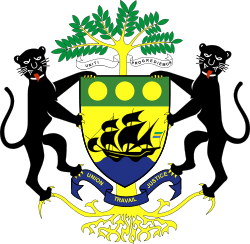Forestry in Gabon
Gabon’s forests, which cover an estimated 77% of its land surface, have always supplied many of the necessities of life, especially fuel and shelter. The forests contain over 400 species of trees, with about 100 species suitable for industrial use. Commercial exploitation began as early as 1892, but only in 1913 was okoumé, Gabon’s most valuable wood, introduced to the international market.
Forestry was the primary source of economic activity in the country until 1968, when the industry was supplanted by crude oil as an earner of foreign exchange. Gabon is the largest exporter of raw wood in the region, and its sales represent 20% of Africa’s raw wood exports. Forestry is second only to the petroleum sector in export earnings, at $319.4 million in 2003. Gabon’s reserves of exploitable timber include: okoumé, 100 million cubic meters; ozigo, 25–35 million cubic meters; ilomba, 20–30 million cubic meters; azobé, 15–25 million cubic meters; and padouk, 10–20 million cubic meters.
Gabon supplies 90% of the world’s okoumé, which makes excellent plywood, and also produces hardwoods, such as mahogany, kevazingo, and ebony. Other woods are dibetou (tigerwood or African walnut), movingui (Nigerian satinwood), and zingana (zebrano or zebrawood). Roundwood removals were estimated at 4 million cubic meters in 2004, with 13% used as fuel wood.
Exploitation had been hampered, to some extent, by the inadequacy of transportation infrastructure, a deficiency now alleviated by the Trans-Gabon Railway and Ndjole-Bitam highway. Reforestation has been continuously promoted, and selective thinning and clearing have prevented the okoumé from being forced out by other species. Over 50 firms are engaged in exploitation of Gabon’s forests. Logging concessions covering about 50,000 square kilometres (19,000 sq mi) have been granted by the government, with the development of the least accessible areas largely carried out by foreign firms. Traditional demand in Europe for African lumber products has declined in recent years; during the 1980s, European demand for okoumé dropped by almost one-third. Markets in Japan, Morocco, and Israel, however, have become more receptive to African imports.
